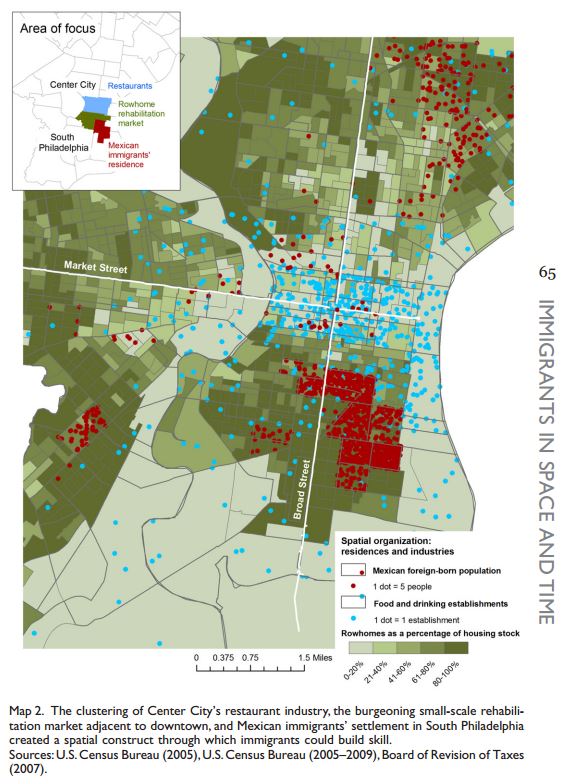Learning in Place: Immigrant Spatial and Temporal Strategies for Occupational Advancement
Studies of low-wage workers have long recognized the role of space in mediating access to employment. Significantly less attention has been paid to the ways in which space informs workers' ability to develop the attributes that would make them more employable. In this article, we address this gap through an examination of how immigrant workers use the relative spatial organization of residence and production to cultivate the skills that enable them to shift out of low-wage occupations. We also argue that workers' spatial job market strategies have an important, but often overlooked, temporal aspect: workers use space over time not only to shape their access to jobs but also to create breathing room for learning skills that enable them to improve their employment trajectories over the long term. Drawing on a multiyear ethnographic study of Mexican immigrants in downtown Philadelphia, we show that immigrant workers used the functional proximity among the restaurant industry, small-scale residential construction work pertaining to housing renovation, and the neighborhoods where they lived to develop skill sets that enabled them to shift into higher-wage construction jobs. In essence, these workers knitted together two seemingly separate industries, such that they could use their employment time in one for learning in and about the other. Our study suggests that interventions that curtail immigrants' mobility may have implications that are far more serious than limiting immediate access to jobs: these measures may undercut immigrants' strategies for developing the skills required for long-term occupational mobility and advancement.
